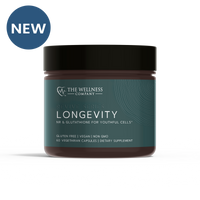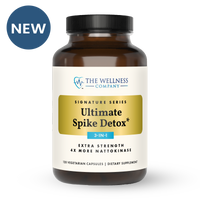The Hidden Benefits of Endurance Training

The year 2020 was the first in which the World Health Organization recommended muscle strengthening as part of its physical activity guidelines for everyone.
It’s wonderful that lifting weights is no longer confined to the world of gym bros, powerlifters, and athletes. The benefits, such as improved bone density, cognitive function and metabolic health, should be available to all.
But as beneficial as resistance training is, it’s only one part of a balanced physical activity routine. Endurance training – good old-fashioned cardio on a bike, the trail, or the Stairmaster – is equally important.
Keep Calm and Do Cardio
This advice is neither radical nor new. You’ve probably heard your whole life that you should do more cardio. But this advice isn’t based on hand-waving.
As more and more research mounts, the statistics are hard to ignore. A 2018 study in Cardiology showed a five-fold increased risk of all-cause mortality in people in the bottom 25% of VO2max (a measure of cardiovascular fitness) for their age and sex, compared to people in the top 2.5%.
If a five-fold risk doesn’t sound like much, think of it this way: that number exceeds traditional risk factors for death such as cardiovascular disease, diabetes, and even smoking.
But how exactly does cardiovascular exercise help you live longer? The answer is simple: it prevents many of the chronic diseases which are the leading causes of death. High cardiovascular fitness is associated with reduced risk of cancer, coronary artery disease, hypertension, diabetes, and stroke. In addition, recent research suggests that physical activity reduces your risk of developing dementia, alzheimer’s and other forms of cognitive decline.
Your Brain Will Thank You, Now and Later
Endurance training not only improves your brain’s function; it literally increases the size of the memory centers in your brain, which typically shrink with age. In a fascinating study, researchers found that a one-year walking program (40 minutes, three days per week) increased the size of participants’ hippocampi (their chief memory centers) by 2%.
In comparison, the study’s control group, which performed stretching and toning exercises, saw a 1.4% decline in volume of this critical brain region. That may not sound like much, but compounded over decades, these habits add up.
So, we’ve clarified that cardiovascular fitness is important. How much of it should you do?
The More, the Better
First, note that some is better than none. If you are currently sedentary, any increase will yield huge benefits. Going from one hour to three hours of cardiovascular exercise per week is one of the single most powerful things you can do for your health.
Indeed, the World Health Organization recommends 150-300 minutes of moderate intensity exercise, or 75-150 minutes of vigorous intensity exercise, per week. Second, it’s clear that while some exercise is certainly better than none, it takes a very long time to reach the point of diminishing returns. The more, the better, according to most research.
Minimum Cardio for Some
If you're older, or have a condition that makes endurance training impossible, this video is very helpful.
The Bottom Line
Ironically, as the importance of cardiovascular exercise has become clearer and clearer in the research, our modern society has become more sedentary than ever. Whether you’re already in shape and aiming to optimize longevity, or trying to reverse a chronic disease, it’s never too late to leverage endurance training as a tool to achieve your goals.














